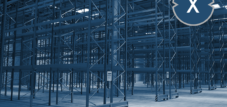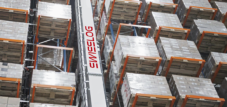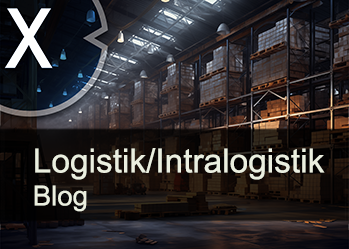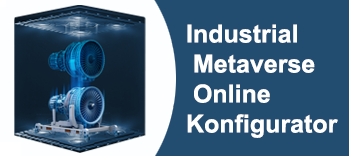The High-Bay Storage Systems (HBS) of Amova – The HBS solution of container logistics by rail-bound shelf operations devices
Xpert pre-release
Language selection 📢
Published on: July 22, 2025 / update from: July 22, 2025 – Author: Konrad Wolfenstein

High-Bay Storage System for Container's Under Construction, Jebel Ali Port, Dubai – Image: SMS Group
Heavy-load logistics – automation extreme: innovative plant concepts for industrial giants
What is Amova and what role does the company play in the logistics industry?
Amova is a subsidiary of the SMS Group and has many years of experience in the construction of automated warehouse systems for the heavy industry. The company, which is also known from history as SMS logistics systems or Siemag, has been realizing innovative plant concepts for over 60 years. Their special expertise lies in dealing with extremely heavy loads, especially for steel and aluminum coils that are heavy and can weigh up to 50 tons. This decades of experience in 24/7 operation under rough industrial conditions forms a perfect basis for container logistics.
Suitable for:
- The top ten of the container high-class bearing manufacturers and guidelines: technology, manufacturer and future of port logistics
What technical properties are the High-Bay Storage Systems (HBS)?
The heart of the Amova HBS systems are very robust, rail-bound shelf control units, which are called stacker cranes. These are designed for a load of up to 50 tons, which is of crucial importance, since loaded 40-foot containers can weigh over 30 tons. The shelf control units move on rails in the storage alleys and can move containers horizontally and vertically at the same time, which leads to a high deposit and outdoor performance.
The system is completely modular and can be adapted for large seaports as well as for smaller industrial and logistics parks in the hinterland. A fundamental element of the HB is a so -called “alley”, which consists of two shelves, between which a rail system is arranged for the cranes stacker. The HBS building can consist of several streets and even gradually expanded while the port is in operation.
How does the technical principle of the rail -bound shelf control units work?
Rail -bound shelves are alleged, single -lane vehicles to operate the goods in a high -bay warehouse. They move in three axes: X-axis for the longitudinal length (driving unit), y-axis for the vertical direction (lifting unit) and z-axis for the course of the gait (load intake). The automated versions can handle containers up to a positioning accuracy of +/- 50mm, even if a 12-meter container weighs 40 tons and moves at speeds of 5 meters per second.
The special feature of the Amova systems is that each container is placed in its own, firmly assigned shelf. The automated shelf operator drives directly to this subject, removes the container and transports it to the transfer point without having to move a single other container. Each container can be reached 100 percent at all times, which leads to dramatically shorter handling times and foreseeable envelope times.
What impressive capacity values do the HBS systems achieve?
The theoretical capacity of Amova is impressive: a high-density multi-street arrangement can achieve a storage capacity of over 160,000 TEU per hectare per year. This underlines the enormous density of their systems. The area efficiency of HBS systems results from two factors: vertical stacking and compacted geometry. While traditional straddle carrier fields can usually only stack up 3 to 4 layers and create RTG cranes 5-6 locations, HBS systems use up to 11 locations.
The system offers more than triple storage capacity in the same area compared to conventional solutions. The storage capacity on the same base area is at least doubled or tripled. In pairs arranged stationary shelves on both ends of each HBS-Gasse offer an efficient interface to the water side horizontal transport system.
What extensive experience has Amova gained in practice?
Amova has implemented several high -bay warehouse in steelworks since 2006 and has numerous references worldwide. The company even holds the record for the world's largest high -bay warehouse for steel coils with around 4,300 storage spaces. An impressive example of the longevity of the Amova technology is shown by Elvalhalcor: The existing high-bay warehouse, which was delivered by Amova 20 years ago, is still fully in operation. This is proof of the high quality and durability of the systems.
The more than 45 references worldwide include fully automatic systems with minimal space requirements, maximum throughput and without material damage. Amova develops turnkey, highly efficient storage concepts including transport and control technology as well as warehouse management software. This decades of experience in 24/7 operation Under rough industrial conditions is a strong sales argument for transfer to container logistics.
What strategic market positions pursues Amova?
Amova positions itself as a provider for tailor-made HBS solutions that can be adapted to specific customer requirements. They act as a flexible solution provider that offers proven heavy load technology for a wider range of applications, including industrial and internal terminals. The company has successfully transferred its decades of know-how in the field of high-bay warehouse for heavy loads to the application to container terminals – as the first company worldwide.
The HBS system is very modular and can be tailored for terminal needs for both Brownfield and Greenfield locations. Capacity and throughput can be scalable due to aisle length, number of alleys and the number of stacker cranes per alley. This flexibility enables Amova to operate both large seaports and smaller regional terminals.
How does Amova strategically differ from Boxbay?
Although both belong to the SMS Group, Amova and Boxbay pursue different, complementary strategies. Boxbay is a standardized, highly scalable product that is primarily introduced into the global seaport market by the partner DP World. Boxbay is an international joint venture between the DP World and the SMS Group, whereby the high-bay warehouse technology was originally developed by the SMS Group subsidiary Amova for 24-hour operation with metal coils of up to 50 tons.
Amova, on the other hand, acts more as a flexible solution provider who offers its proven heavy load technology for various market segments. This can be seen as a double strategy of the SMS Group to cover various market segments. While Boxbay focuses on the standardized seaport market, Amova with its HBS systems serves a wider range of applications and tailor-made solutions.
What technical innovations do the Amova shelf control devices characterize?
The Amova shelf control units have a lifting area equipped with a rolling deck and can move containers horizontally and vertically at the same time. This leads to a high deposit and outdoor performance combined with precise handling. Amova offers two types of execution: single -board devices with integration of the upper guide rail into the warehouse steel construction and two -rail devices that are installed independently of the shelf construction.
The small wheel loads are an advantage of the two -rail devices, as the vertical load is spread over four instead of two wheels. The shelf control units have different operating modes: in addition to fully automatic operation, semi -automatic or completely manual operation is also possible, as well as a special maintenance mode. Particular attention is paid to the uncompromising operational safety, so they are very maintenance -friendly, which shortens maintenance times and increases availability.
More performance, less effort: container technology for modern ports
What systematic advantages offer rail -bound systems?
Rail -bound systems offer various systematic advantages for container logistics. They can be planned and reliable, designed for higher load weights and available around the clock. The rail freight transport generally bounds less than a fifth of the greenhouse gases per transported bin and kilometer. This is not only due to the drive system, but also the better ratio of transport volume and drive energy used.
The security aspects are also remarkable: the risk of an accident on the rail is around 40 times lower compared to the road. This results in a significantly lower failure rate of shipping goods. In addition, there is a lower risk of theft, since containers are more difficult to access in high -base bearings than on open terminal areas.
Suitable for:
- The simple and evolutionary-grown idea of the container base camp: a paradigm shift in global logistics
What role do warehouse management systems play at Amova?
Amova develops its own warehouse management software, which, in addition to material persecution and visualization, offers numerous other features. A particularly important feature is the temperature tracking based on course simulations, which represents an essential function for material quality. Amova's WMS is an attractive, reliable solution for automated material flow control and warehouse management.
With Unare, Amova offers a modular warehouse management system with directly functional modules for all standard processes. The system has finished interfaces to common systems and is designed in its modular and freely configurable structure. Unare is an integrated system that combines warehouse management, the material flow calculator, system visualization and control technology into one unit.
How does Amova contribute to sustainability and energy efficiency?
All container warehouse or removal movements are carried out by stacker cranes that move containers horizontally and vertically during the journey. This results in high warehouses and expenses with optimal energy efficiency. AMOVA shelf control units can be equipped with different functions that additionally increase energy efficiency and thus reduce operating costs.
The high sustainability of the system can also be seen in enormous energy saving, since unproductive crane drives are completely eliminated. At the same time, this leads to less wear on the devices. The compacted storage in automated systems reduces the space requirement by more than 50 percent compared to conventional systems, which contributes to optimal use of expensive port areas.
Which future-oriented developments shape HBS technology?
Amova uses the latest simulation technology for throughput validation and optimization in systems as well as for the development and implementation of warehouse management strategies. The 3D simulation platform Visual Components is used to map equipment and create models of systems and planned logistics concepts. Simulation studies serve to determine and implement potential for improvement, which means that through sentences can be analyzed and improve performance limits.
The developed simulation and emulation models come into play in various projects, from high-bay bearing alleys with several shelf operating devices to pallet transport systems for steel coils to complex 7-grassy high-distance platforms. The goal is always the throughput validation and maximization using logic optimization. This systematic approach ensures that each Amova system is optimally tailored to the specific requirements of the respective customer.
Which practical application examples illustrate performance?
An impressive example of the performance of Amova technology is the first fully automatic high-bay warehouse for freight containers at Terminal 4 in Jebel Ali, Dubai. This disruptive technology is implemented by Boxbay, a joint venture between DP World and SMS Group/Amova. The test project in Dubai has already successfully carried out over 63,000 container movements and even exceeded the original expectations.
The system in Dubai can accommodate 792 containers at the same time and achieves an output of 19.3 movements per hour at every water side transfer point. The test phase showed that Boxbay is faster and more energy -efficient than originally expected. These experiences flow directly into the further development of the Amova HBS systems and demonstrate the practical applicability of the technology under real port conditions.
How does Amova position herself in international competition?
Amova was the first company to successfully transfer its proven high-bay warehouse technology to container terminal applications worldwide. This pioneering role gives the company a significant competitive advantage, since the technology has been tested in demanding heavy -duty logistics for decades. With over 70 years of experience in the field of intralogistics, Amova has the necessary know-how to develop the best solution for various customer requirements.
The international market for container high-class bearing includes various providers, but Amova is characterized by its proven heavy load expertise. While other manufacturers have developed container-specific solutions, Amova can use a well-founded basis of high-bay warehouse systems that are already proven in extreme industrial environments. This experience in 24/7 operation Under rough conditions is a decisive factor for the reliability of the systems in port environments.
What integration into existing port infrastructures enables Amova?
The Amova HBS system is designed in such a way that it can be seamlessly integrated into existing port infrastructures. A underfloor transport system combines the high-bay warehouse with the land-on truck interface. The pallet circuit system works regardless of the movements of the stacker cranes and without impairing their performance. The main components are self -driving pallets on rails and pallet postponement.
The flexible interfaces enable both the water side and the landing load. The system can be connected both as a single or multi-level system and achieves services of up to 500 containers per hour. The direct connection of the Ship-to-Shore cranes enables high throughput and scalable performance. At the same time, the dynamic assignment of berths is supported, which releases the Kai area for other uses.
What economic advantages do the HBS systems offer?
Amova's HBS systems lead to massive area savings in expensive port areas and significantly shortened lay times of container ships. This results in enormous cost savings for port operators. The system eliminates unproductive movements: Using the example of the Pusan terminal, 350,000 unproductive movements per year are eliminated, which improves the truck operation time by 20 percent.
The economy of the systems is also evident in the optimized land use: With more than triple storage capacity on the same area, port operators can optimally use their valuable land. The automated systems guarantee the overall package optimized as a total package, protection against material damage, reduced costs for administration and transport as well as simple handling and operation. These factors contribute significantly to improve the overall stability of port terminals.
What are the technological future prospects of Amova?
Amova continuously works on the further development of her HBS technology and uses the latest digital tools. The integration of artificial intelligence into the warehouse management systems enables even more efficient optimization of container placement and movements. The development goes towards fully autonomous systems that can work with minimal human intervention.
The modular construction of the HBS systems enables future extensions and adjustments without interrupting the operation. Amova continuously develops the system in order to meet the growing requirements of container shipping. The expertise in the heavy industry offers a solid basis for the integration of new technologies such as IoT, predictive maintenance and expanded automation in the next generation HBS systems.
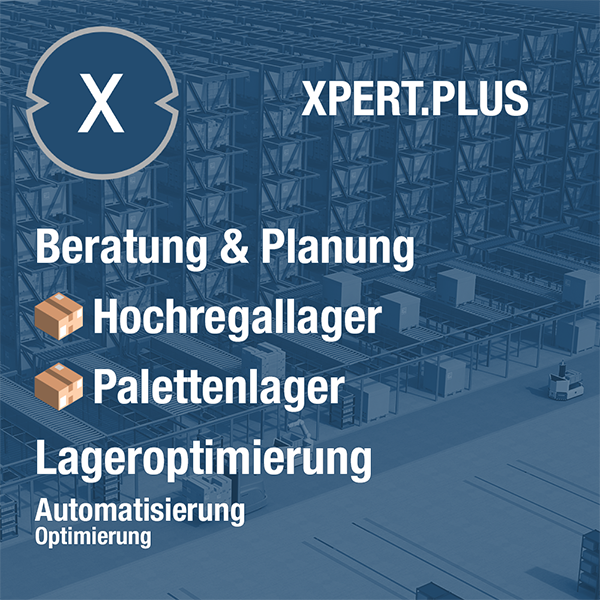
Xpert.plus warehouse optimization – high -bay warehouse such as pallet warehouse advice and planning
We are there for you – advice – planning – implementation – project management
☑️ Our business language is English or German
☑️ NEW: Correspondence in your national language!
I would be happy to serve you and my team as a personal advisor.
You can contact me by filling out the contact form or simply call me on +49 89 89 674 804 (Munich) . My email address is: wolfenstein ∂ xpert.digital
I'm looking forward to our joint project.









